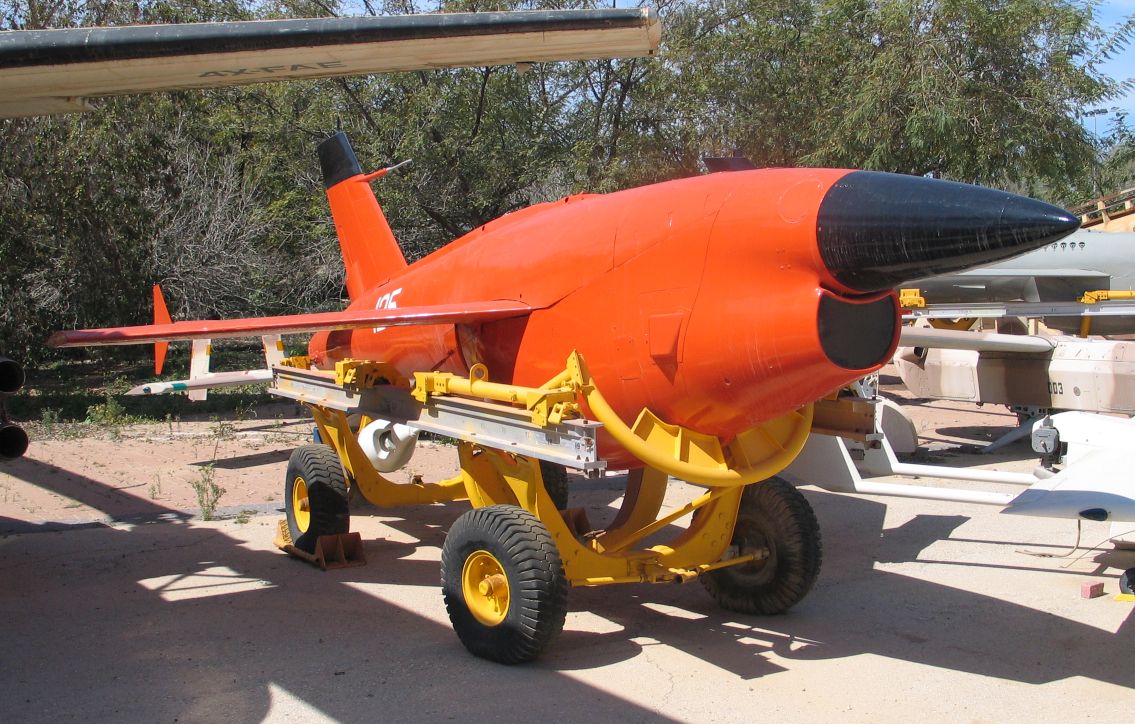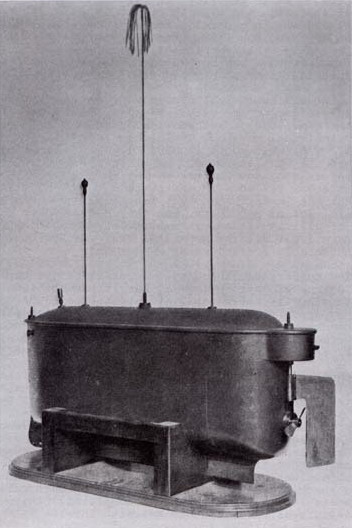|
Globe KDG Snipe
The Globe KDG Snipe was an American target drone, built by the Globe Aircraft Corporation for use by the United States Navy. The KDG, and its modified version, the KD3G Snipe, served between 1946 and the early 1950s. Design and development The KDG Snipe was a small, mid-winged target drone,Grossnick and Armstrong 1997, p.669. operated by radio control. The Snipe was designed to be launched by use of a catapult system; if the aircraft was not destroyed during its mission, it would deploy a parachute for recovery.Parsch 2003 The KDG was powered by a McCulloch 4300 two-stroke engine; an improved version, designated KD3G, was powered by a Kiekhaefer O-45 opposed piston engine An opposed-piston engine is a piston engine in which each cylinder has a piston at both ends, and no cylinder head. Petrol and diesel opposed-piston engines have been used mostly in large-scale applications such as ships, military tanks, and f .... Operational history The Snipe entered service with the U. ... [...More Info...] [...Related Items...] OR: [Wikipedia] [Google] [Baidu] |
Target Drone
A target drone is an unmanned aerial vehicle, generally remote controlled, usually used in the training of anti-aircraft crews. One of the earliest drones was the British DH.82 Queen Bee, a variant of the Tiger Moth trainer aircraft operational from 1935. Its name led to the present term "drone". In their simplest form, target drones often resemble radio-controlled model aircraft. More modern drones may use countermeasures, radar, and similar systems to mimic manned aircraft. More advanced drones are made from large, older missiles which have had their warheads removed. In the United Kingdom, obsolete Royal Air Force and Royal Navy jet and propeller-powered aircraft (such as the Fairey Firefly, Gloster Meteor and de Havilland Sea Vixen used at RAE Llanbedr between the 1950s and 1990s) have also been modified into remote-controlled drones, but such modifications are costly. With a much larger budget, the U.S. military has been more likely to convert retired aircraft or olde ... [...More Info...] [...Related Items...] OR: [Wikipedia] [Google] [Baidu] |
Kiekhaefer O-45
The Righter/Kiekhaefer O-45 was an air-cooled, two-stroke aircraft engine of flat-twin configuration, used extensively for powering target drones in the late 1940s. New England Air Museum. Accessed 2013-02-12. Designed by the Righter Manufacturing Company, the O-45 was also built by the Kiekhaefer Corporation and the Menasco Motors Company
The Menasco Motors Company was an American aircraft engine and component manufacturer.
History
Th ...
[...More Info...] [...Related Items...] OR: [Wikipedia] [Google] [Baidu] |
Mid-wing Aircraft
A monoplane is a fixed-wing aircraft configuration with a single mainplane, in contrast to a biplane or other types of multiplanes, which have multiple planes. A monoplane has inherently the highest efficiency and lowest drag of any wing configuration and is the simplest to build. However, during the early years of flight, these advantages were offset by its greater weight and lower manoeuvrability, making it relatively rare until the 1930s. Since then, the monoplane has been the most common form for a fixed-wing aircraft. Characteristics Support and weight The inherent efficiency of the monoplane is best achieved in the cantilever wing, which carries all structural forces internally. However, to fly at practical speeds the wing must be made thin, which requires a heavy structure to make it strong and stiff enough. External bracing can be used to improve structural efficiency, reducing weight and cost. For a wing of a given size, the weight reduction allows it to fly slower a ... [...More Info...] [...Related Items...] OR: [Wikipedia] [Google] [Baidu] |
1940s United States Special-purpose Aircraft
Year 194 ( CXCIV) was a common year starting on Tuesday (link will display the full calendar) of the Julian calendar. At the time, it was known as the Year of the Consulship of Septimius and Septimius (or, less frequently, year 947 ''Ab urbe condita''). The denomination 194 for this year has been used since the early medieval period, when the Anno Domini calendar era became the prevalent method in Europe for naming years. Events By place Roman Empire * Emperor Septimius Severus and Decimus Clodius Septimius Albinus Caesar become Roman Consuls. * Battle of Issus: Septimius Severus marches with his army (12 legions) to Cilicia, and defeats Pescennius Niger, Roman governor of Syria. Pescennius retreats to Antioch, and is executed by Severus' troops. * Septimius Severus besieges Byzantium (194–196); the city walls suffer extensive damage. Asia * Battle of Yan Province: Warlords Cao Cao and Lü Bu fight for control over Yan Province; the battle lasts for over 100 days ... [...More Info...] [...Related Items...] OR: [Wikipedia] [Google] [Baidu] |
Globe Aircraft
A globe is a spherical model of Earth, of some other celestial body, or of the celestial sphere. Globes serve purposes similar to maps, but unlike maps, they do not distort the surface that they portray except to scale it down. A model globe of Earth is called a terrestrial globe. A model globe of the celestial sphere is called a ''celestial globe''. A globe shows details of its subject. A terrestrial globe shows landmasses and water bodies. It might show nations and major cities and the network of latitude and longitude lines. Some have raised relief to show mountains and other large landforms. A celestial globe shows notable stars, and may also show positions of other prominent astronomical objects. Typically, it will also divide the celestial sphere into constellations. The word ''globe'' comes from the Latin word ''globus'', meaning "sphere". Globes have a long history. The first known mention of a globe is from Strabo, describing the Globe of Crates from about 150 ... [...More Info...] [...Related Items...] OR: [Wikipedia] [Google] [Baidu] |
Opposed Piston Engine
An opposed-piston engine is a piston engine in which each cylinder has a piston at both ends, and no cylinder head. Petrol and diesel opposed-piston engines have been used mostly in large-scale applications such as ships, military tanks, and factories. Current manufacturers of opposed-piston engines include Fairbanks-Morse, Cummins and Achates Power. Design Compared to contemporary two-stroke engines, which used a conventional design of one piston per cylinder, the advantages of the opposed-piston engine have been recognized as: * Eliminating the cylinder head and valvetrain, which reduces weight, complexity, cost, heat loss, and friction loss of the engine. * Creating a uniflow-scavenged movement of gas through the combustion chamber, which avoided the drawbacks associated with the contemporary crossflow-scavenged designs (however later advancements have provided methods for achieving uniflow scavenging in conventional piston engine designs). * A reduced height of the en ... [...More Info...] [...Related Items...] OR: [Wikipedia] [Google] [Baidu] |
Flat Engine
A flat engine is a piston engine where the cylinders are located on either side of a central crankshaft. Flat engines are also known as horizontally opposed engines, however this is distinct from the less common opposed-piston engine design, whereby each cylinder has two pistons sharing a central combustion chamber. The most common configuration of flat engines is the boxer engine configuration, in which the pistons of each opposed pair of cylinders move inwards and outwards at the same time. The other configuration is effectively a V engine with a 180-degree angle between the cylinder banks; in this configuration each pair of cylinders shares a single crankpin, so that as one piston moves inward, the other moves outward. The first flat engine was built in 1897 by Karl Benz. Flat engines have been used in aviation, motorcycle and automobile applications. They are now less common in cars than straight engines (for engines with less than six cylinders) and V engines (for engi ... [...More Info...] [...Related Items...] OR: [Wikipedia] [Google] [Baidu] |
McCulloch Motors Corporation
McCulloch Motors Corporation is an American manufacturer of chainsaws and other outdoor power tools. The company was founded in Milwaukee, Wisconsin, in 1943 by Robert Paxton McCulloch as a manufacturer of small two-stroke gasoline engines and introduced its first chainsaw in 1948, the Model 5-49. McCulloch and its brand are owned by Husqvarna. History McCulloch moved its operation to California in 1946. In the 1950s, McCulloch manufactured target drone engines, which were sold to RadioPlane in the 1970s. These McCulloch 4318 small four cylinder horizontally opposed two-stroke engines were also popular for use in various small autogyros, such as the Bensen B-8M and Wallis WA-116. McCulloch also started Paxton Automotive, manufacturing McCulloch-labeled superchargers like the one fitted to the Kaiser Manhattan, the 1957 Studebaker Golden Hawk, and Ford Thunderbird. In 1959, they produced their first kart engine, the McCulloch MC-10, an adapted chainsaw two-stroke engin ... [...More Info...] [...Related Items...] OR: [Wikipedia] [Google] [Baidu] |
United States
The United States of America (U.S.A. or USA), commonly known as the United States (U.S. or US) or America, is a country primarily located in North America. It consists of 50 states, a federal district, five major unincorporated territories, nine Minor Outlying Islands, and 326 Indian reservations. The United States is also in free association with three Pacific Island sovereign states: the Federated States of Micronesia, the Marshall Islands, and the Republic of Palau. It is the world's third-largest country by both land and total area. It shares land borders with Canada to its north and with Mexico to its south and has maritime borders with the Bahamas, Cuba, Russia, and other nations. With a population of over 333 million, it is the most populous country in the Americas and the third most populous in the world. The national capital of the United States is Washington, D.C. and its most populous city and principal financial center is New York City. Paleo-Americ ... [...More Info...] [...Related Items...] OR: [Wikipedia] [Google] [Baidu] |
Catapult
A catapult is a ballistic device used to launch a projectile a great distance without the aid of gunpowder or other propellants – particularly various types of ancient and medieval siege engines. A catapult uses the sudden release of stored potential energy to propel its payload. Most convert tension or torsion energy that was more slowly and manually built up within the device before release, via springs, bows, twisted rope, elastic, or any of numerous other materials and mechanisms. In use since ancient times, the catapult has proven to be one of the most persistently effective mechanisms in warfare. In modern times the term can apply to devices ranging from a simple hand-held implement (also called a "slingshot") to a mechanism for launching aircraft from a ship. The earliest catapults date to at least the 7th century BC, with King Uzziah, of Judah, recorded as equipping the walls of Jerusalem with machines that shot "great stones". Catapults are mentioned in Yajurveda un ... [...More Info...] [...Related Items...] OR: [Wikipedia] [Google] [Baidu] |
Radio Control
Radio control (often abbreviated to RC) is the use of control signals transmitted by radio to remotely control a device. Examples of simple radio control systems are garage door openers and keyless entry systems for vehicles, in which a small handheld radio transmitter unlocks or opens doors. Radio control is also used for control of model vehicles from a hand-held radio transmitter. Industrial, military, and scientific research organizations make use of radio-controlled vehicles as well. A rapidly growing application is control of unmanned aerial vehicles (UAVs or drones) for both civilian and military uses, although these have more sophisticated control systems than traditional applications. History The idea of controlling unmanned vehicles (for the most part in an attempt to improve the accuracy of torpedoes for military purposes) predates the invention of radio. The latter half of the 1800s saw development of many such devices, connected to an operator by wires, inclu ... [...More Info...] [...Related Items...] OR: [Wikipedia] [Google] [Baidu] |






